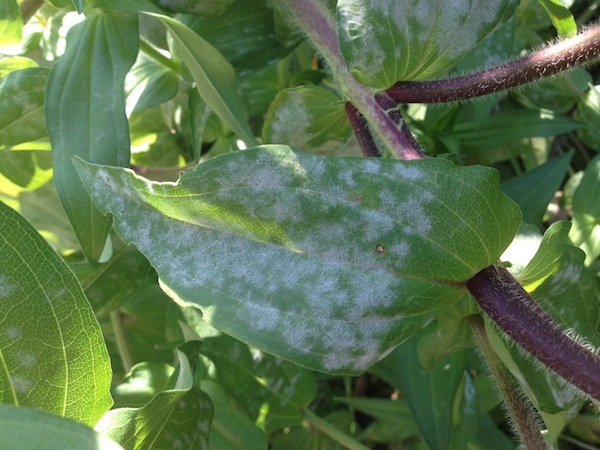Are Fungal Diseases Putting a Damper on Your Harvest?
November 23, 2024
Here are a few of the most common fungal diseases you’ll fight indoors and out
No matter if you are growing your plants indoors, or tending an outdoor garden, the balance of temperature and water always plays a big part in overall plant health. When temperature and humidity reach certain levels, fungal diseases can explode, ruining the crops you’ve put so much effort into growing. Over-watering, watering on top of foliage and too much humidity create conditions in which fungal diseases can thrive.
POWDERY MILDEW
Poor ventilation and too much water are an open invitation for powdery mildew to move in. In addition to these environmental conditions, pests such as aphids can also spread the diseases to your plants. As they pierce the leaves to suck out juices, they spread the fungal spores from leaf to leaf. Many indoor grown plants, roses, zinnias and tomatoes are especially susceptible to powdery mildew.
In the outdoor garden, you can reduce the spread of powdery mildew by restricting watering to the early morning hours, so that water doesn’t sit on foliage overnight. Also, try to water at the ground level, rather than water plants on top of their foliage. Plants like roses commonly succumb to fungal diseases due to overhead watering. Overcrowding plants in the garden can also lead to breakouts of fungal diseases when humidity levels are high.
Indoor growers should be sure to ventilate their growing area well and keep the growing area very clean. Always remove infected foliage, or any infected foliage that has dropped. Leaf litter around your growing space can harbor and spread new fungal spores to your plants, as well as create habitat for pests.
Organic remedies for powdery mildew include SaferGro Mildew Cure and Safer Garden Fungicide.
TIP: Keeping a clean grow area and tools will keep fungal diseases and pests from spreading or breeding.

DAMPING OFF
Damping off is a disease that typically affects new emerging seedlings and cuttings. The stem will start to weaken, rot right at the soil line, and then fall over. There is a large host of fungal pathogens that cause damping off and most are present in all soils. These pathogens include Fusarium, Botrytis, Rhizoctonia, Alternaria and many more. Young seedling stems are most susceptible to these pathogens. Strong seedlings with quick growth and vigor will be most resistant to infection.
There is no cure for damping off so preventative care is key. Damping off generally becomes a problem when planting media is kept too moist as seedlings are emerging. High humidity and poor air circulation also add to the problem. It’s best to use a quality, well-draining medium when germinating seeds. Organic Mechanic seed starting blend or JumpStart Pellets are both good options.
You can also use a sterile medium, such as Premier ProMix that contains a natural biofungicide to help suppress fungal diseases.
GRAY MOLD, BOTRYTIS
Have you noticed gray, soft and mushy spots on plants leaves, stems, flowers and fruit? If it looks a little like hair or lint, it’s probably gray mold, or Botrytis. Excessive humidity is the biggest cause of gray mold; once it takes hold, gray mold is very difficult to cure. Plants with a severe Botrytis infection often die. Immediate removal of infected plants from your growing area will keep it from spreading to healthy plants. If you catch an outbreak quickly, you could potentially fight it off. Remove the mold from leaves with a soft, dry cloth, clean and sanitize your grow area, remove debris in the garden if outdoors, increase ventilation and reduce humidity.
Eva-Dry Dehumidifier EDV2200 is a an example of a mid-sized conventional dehumidifier that can knock moisture out of most spaces.
You can also treat plants with gray mold with fungicides, including organic copper and sulfur based fungicides. A good option is the biological fungicide SERENADE Garden Disease Control: The spray can be used on fruits, vegetables, and flowers without harm to people or the environment.

